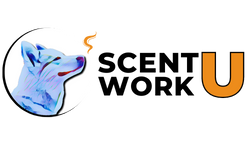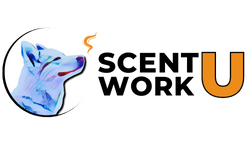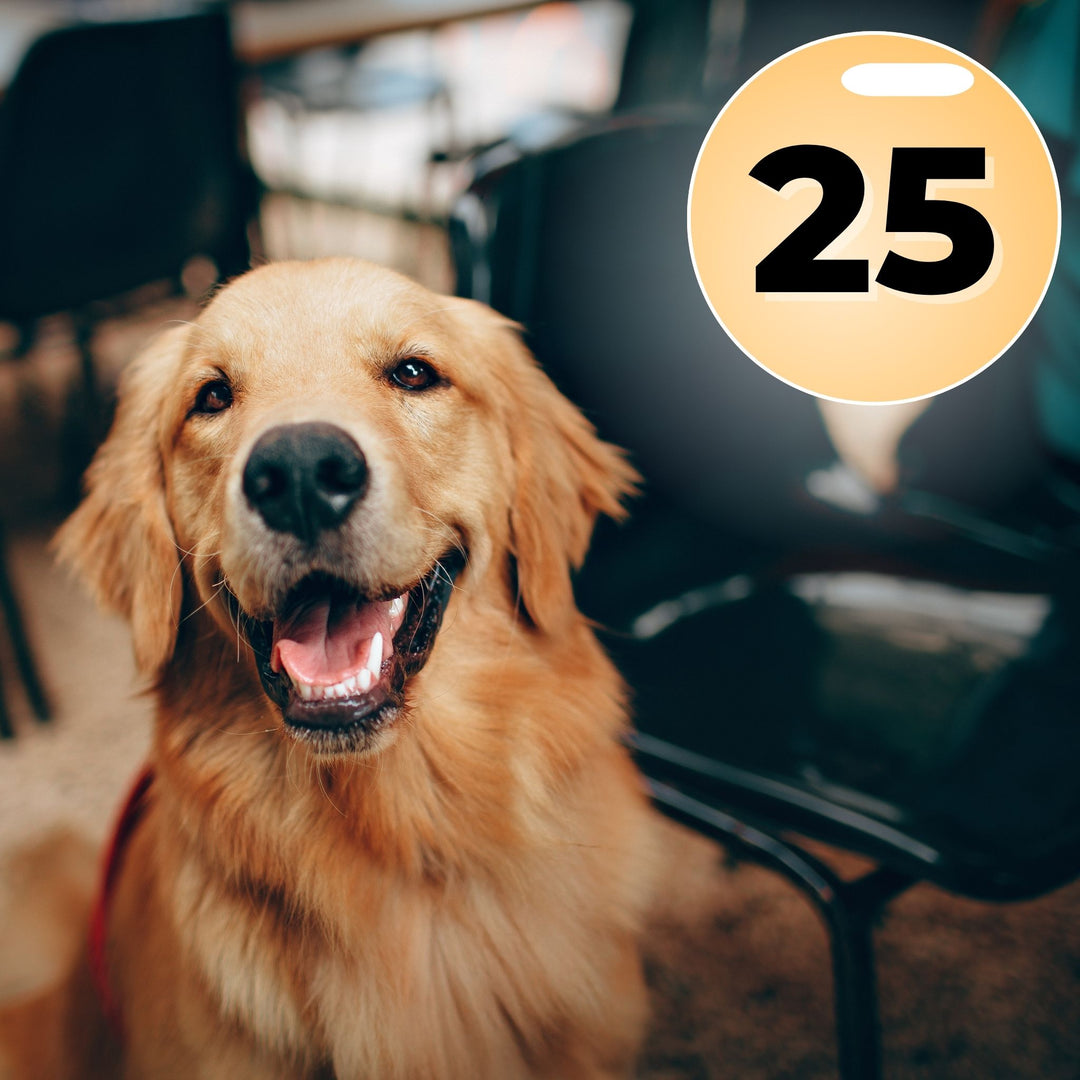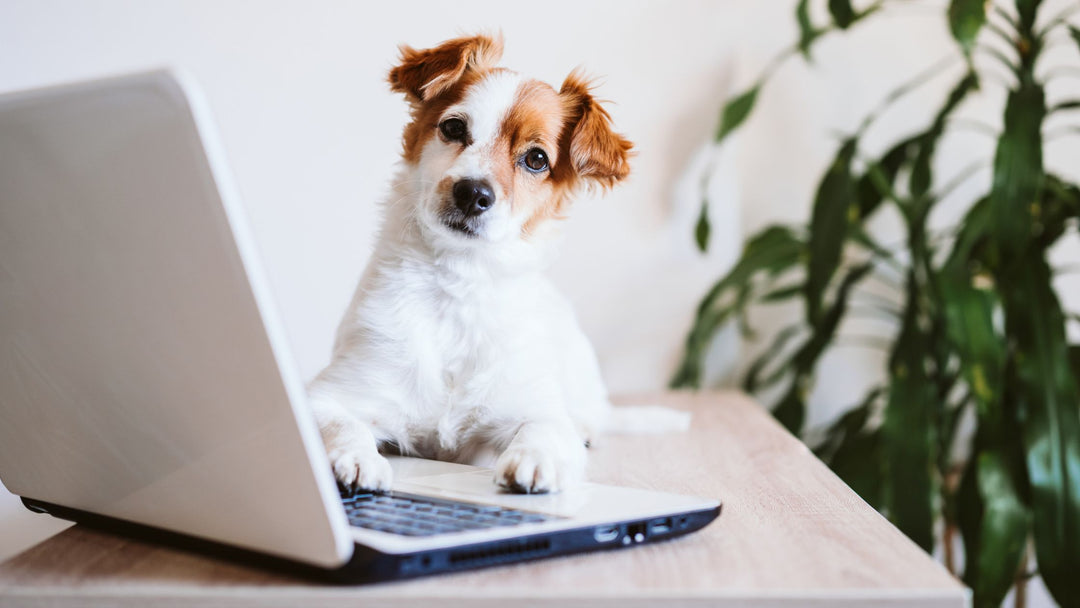Ep. 88: Interiors: Interesting or Infuriating?
In this podcast episode, Dianna discusses how fun and exciting Interior searches can truly be once we look beyond the "stuff" in the space and, instead, take in all the elements and factors the space itself has to offer.
Does our dog struggle with slippery floors? You are in luck! Kayla Dever and Samantha Winslow are offering a webinar outlining solutions for this very issue. Be sure to check out their The Floor is Lava Webinar.
Does your dog blow through their threshold hides? No worries, Michele Ellertson has the solution in her excellent Threshold Hides: From Terrible to Terrific Webinar where she outlines a specific training plan for you to try with your pup!
TRANSCRIPT
Dianna L. Santos (00:00):
Welcome to the All About Scent Work Podcast. In this podcast we talk about all things Scent Work that includes training tips, a behind scenes look at what your Scent Work instructor or trial official may be going through and much more. In this episode, I wanted to talk about interiors. So before we start diving into the podcast episode itself, let me do a very quick introduction of myself. My name is Dianna Santos. I'm the Owner and Lead instructor for Scent Work University, Dog Sport University and Pet Dog U. These are online dog training platforms that are designed to help you achieve your dog training goals. And we're very fortunate to have a client base worldwide. For Scent Work University inparticular, we provide online courses, seminars, webinars, and eBooks that are all focused on helping you in your sniffing journey. So whether you're just getting started in Scent Work, looking to develop some more advanced skills, you're interested in trialing for your already trialing, but looking to finesse some skills, particularly for those upper levels of competition, we likely have a training solution for you. So now to know a little bit more about me, let's get started with the episode itself.
(00:59):
So in this episode I wanted to talk about interiors and I wanted to talk about some of the things that I've heard over the years from clients and just in the community overall regarding interiors and some of the trends that I've noticed and some of my opinions about those trends. . And I just wanna start off by saying that, you know, take all of this with a grain of salt. These are opinions of my own as a professional trainer, as someone who plays the game as a, you know, a former trial official. But you may have a different take and that's totally fine. But I do think that there is, at least in my opinion, there seems to be a tendency to view interiors in a way that I don't think is overly helpful or at the very least it's almost limiting. So I'll try to put words to this so this makes more sense.
(01:54):
What I've noticed with interiors is that immediately it becomes about the stuff that's in the interior and it becomes more so an item search than it becomes an interior search, at least in the way that the hides are set or in the way that the handler or the trainer, meaning you are also a trainer when you're working with your dog cuz you're designing your searches that it, again, it's just basically where is a flat spot that I can put my hide kind of thing. And it's always about the stuff that's in the space. It's never just about the space itself and it's this lack of appreciation for all the various elements and factors that could be playing with a potential odor picture. And it's almost a, I don't know how to put, it's not that it's boring, but people kind of are very lackadaisical about interiors and they almo it morphs into something that I don't think it really needs to be, if that makes any sense whatsoever.
(03:06):
So I'll try to try this another way. Let's say that you're practicing at home and you, for instance, I have sitting in my office right now, it's just, you know, if you're to look at the space outside of Scent Work, it is a bedroom for all intents and purposes. There's no bed in here, there's a computer desk, there's two filing cabinets, there's a double door closet, there's a window, there's a door. That's pretty much it. , there's also a crate and a dog bed, but there's not a whole lot in here, right? So if I were to just focus on stuff, it's possible that on first glance the options are limited. Where once I've exhausted certain obvious places that I could be putting hides, I may now think, well I can't use his room anymore, right? Or I could just be teaching, the dog will just check this one spot, which obviously we don't want.
(04:00):
That would be bad. But for me, this room has so many opportunities and so many possibilities as far as hides. And again, right now I am working with my new dog who's this tiny little terrier, little smooth fox terrier boy. And we're just hunting for primary, which means he's hunting for food or toys. And I have so many different things that I can do in this tiny little room. I can be working on deep accessible hides where I have the food underneath my computer desk, basically where my legs are right now. And I can play with how far or not in the actual chair is, will he be able to get around the chair in order to get the food right? I don't need to use the desk at all. I could do the same kind of thing as far as the problem solving, hide placement with the door.
(04:57):
So this is one of my favorite things to do for interiors. You could do his exteriors too, but I'll have the door completely open coming into the room and I'll have my treat on the other side of the door. So in between the door and the wall. So he has to come up and he has to figure out, okay, I smell treat , I can smell treat underneath the door, but how do I get to it? So now I have problem solving and he's a terrier. So terriers like to dig, which we don't want particularly in Scent Work. That would be all kinds of icky. So how can I set this up where I'm not promoting him to just be on the other side of the door and dig the bejesus out of it? We don't want that. How can I promote him to go on the other side of the door and squeeze his little terrier body in there to get the treat?
(05:45):
These are all really great things for me to play with that I can just do in this room. I can work on difficult to access hides, cuz again, I'm working with primary. So the whole point with primary is they have to be able to get to it, they have to be able to solve reward, otherwise you are training destructive behavior, which is all kinds of bad. So I could be using the drawers in my computer desk, have them open slightly so he can get his little terrier nose in there to still get the treat. But he actually is pushing the drawer more open so he'd be able to get in there. I could have the closet doors open slightly, which we just did today and play with planes, meaning that I could have hides at different heights. So on the ground at head height for him and above head height for him.
(06:35):
And he's never been in the closet before. He's been here since November 24th or something. And it is now February 1st. Crazy . So he hasn't been here all that long, but he's never been inside that closet. So now you have a novel environment and all these things, it's an enclosed space but the door is just slightly open and they're sliding doors. So all these things that I can play with where I don't really need to worry about stuff. The other thing that I do a lot with him is he loves to rush into spaces. He's very gungho, which again is not a bad thing. It's wonderful. But I want to make certain that he understands that there can be hides right at the threshold. So what we've been working on in all of our little practice sessions is that there's always 99.9% of the time there are treats right along his threshold.
(07:26):
And it might be right down in front of the start line or maybe somewhere along that wall. At the very least it's within the same room before he goes into another room because he's searching the whole house. And that is wonderful learning for him. So that also means that I get to play with again, just this room, with all these various skill sets of, well what is gonna constitute as a threshold? Is it going to be on the ground? Am I also gonna be playing with elevation? How much of an elevation am I gonna be playing with? How close is that threshold going to be? I'm also working on impulse control because he is just targeting a bed or his crate with the door wide open and he's just gonna wait like, okay, you wait as I go set up my treats and I'm taking longer and longer and longer to do that and he really, really wants to play.
(08:20):
But him learning to wait and breathe, he can actually get a pretty good tell on where those threshold hides are just by hanging out in his bed. So all of this is done because we're doing interiors, right? And it's not just about the stuff in the space, it's about what can I leverage in the space. So for instance, I love using door jams. I don't know what everything is called . I'm terrible in understanding what everything is labeled or what you're supposed to call these things. But baseboards I believe love putting things on those, love putting things on hinges of doors. The little door strike, I think it's called the hole, that the thing for the door goes into . I love putting hides in there and he can absolutely reach that even though he's a tiny little dog and he knows that that's a possibility.
(09:11):
So now when he's going around and he can smell that something is elevated, he's checking those things on his own window sills underneath window sills. Playing with sun and shade is so important to do inside interior searches going in, playing in different times of the day. Where, where is the sun coming in? How long has it been there? Because when air is warm is going to rise, when air is cool is going to drop when the heat is on. We have only had heat on recently , but there's going to be air conditioning. I have four fans, we can have windows open, we can have windows closed, doors open, doors closed, like there's so much that you can play with with interiors and I just find it so incredibly exciting . And then to watch him figure all this stuff out on his own primary is so re reinforcing to me that it makes me very sad when people instead will set up an interior that almost kind of looks like a container search maybe cuz it's just a bunch of random stuff, , and it's just all kind of like drawed together in the middle of a room and like, okay go search it.
(10:18):
And it's like that's not really an interior search to me. It's, I mean the dog's still searching for stuff. I mean that's fine but that's not really what we should be leveraging as much as we can. It's not that I'm saying staged is bad, but I think the way that we staged or the way that we stage a space really doesn't make a difference how you can have, you can still have tables and chairs, you can still even have random stuff, right? But the way that you place it in the space so that you're offering these different pictures to the dogs, particularly if you're interested in competition, that they may actually see a trial where it's possible that, as an example, let's say that a trial official was able to secure a business for their trial site and one of the rooms that was available to them was kind of a, an officey kind of thing.
(11:14):
But it's for this like general type of business and it's just kind of an off officey thing. Like it's a kind of disjointed, there's just a whole bunch of stuff in there. , cuz I've been to some of those trials. That is something you want the dogs to have experienced in training, right? Where it can have the, the skeleton of an actual quote unquote formal room where you may have a table and some chairs, but then there's just stuff trying not to say junk cuz it's not, it's just a bunch of things. But it's not about the things themselves, it's about what that all does to this space as far as what airflow is doing, where your sudden shade is coming in, where there's potential pooling, any kind of spatial issues that your dog may have now that the space is more claustrophobic. Where are you going to be as the handler?
(12:07):
What are you gonna do with your handling? How is it going to affect your dog? How is your dog gonna be able to move around the space? Because again, we at this point, if you've been doing some work for any period of time, regardless of what it is they're hunting for, they move a lot when they're hunting. So some of these interior spaces are really, really, really tight. Where the dog may feel as though they need to change direction to figure out where the odor is going, going or coming from and they feel like they can't. Particularly the bigger dogs are like, where do I put my feet? Or when they're doing that, they may hit something, their tail may hit something as an example, they may bump into something with their shoulder or their hip and all of a sudden they're like, wait a second, that thing moved, it made a noise or whatever.
(12:52):
And now their attention is totally broken cuz no they're worried or concerned or even just curious about this thing that moved. If we haven't done that kind of stuff in our training, it's not really fair to expect the dog to do well at a trial. But this is what I mean is that I don't know that the focus with interiors is on the right stuff when I'm seeing a lot of people practice. And it's also like a very, as far as like a ranking of how people rate their excitement level for searches, I would say at the very bottom is containers , which and I've talked about already, which is very, very sad and that the top are exteriors until things get gross where maybe the dog is getting dis, you know, distracted or maybe they're potting or something like that. Or maybe the exterior gets so incredibly distracting cuz now they're going somewhere that's really public interiors kind of fluctuates.
(13:54):
It depends on the interior obviously, but they can also shift as far as the excitement level of the handler during the search itself. And there's definitely certain types of interiors that people dread when we're talking particularly about trialing things that I've heard as far as interiors that people are like, I don't want to do that. Or things such as audio, state audio, uh, basically places with a lot of chairs or stands, I'm losing my words, but I've been to several of these places for workshops and whatnot where there are just rows and au auditoriums. There it is , it was coming. People dread those cuz they're exciting. At first you're like, Ooh, how fun. But now you have to figure out how am I gonna get up and down all these rows of chairs with my dog Again, not easy, not easy at all.
(14:51):
And also you kind of realize as you're doing it just how complicated this can be as far as odor is concerned. So it can start off really exciting and then as you're doing it, like ugh, some of the other ones that people will dread obviously are your slippery floors. So we actually are very, very fortunate that we're going to be having a webinar addressing that specific thing of how you may be able to help your dog deal and cope with slippery floors. We have Kayla Dever and Samantha Winslow coming on March 1st, 2023 for their, the Floor is Lava Webinar, which sounds really, really interesting to provide some skills and tips on how we can help the dogs be more successful in those spaces. Cuz that is definitely a big bugaboo for people when they're doing interiors is that, ugh, you know, if it's a slippery floor, my dog is not gonna be able to do it.
(15:41):
You may wanna check that webinar out, I'll make sure there's a link for it in our replay page. Some other ones that people can be really excited about and they're like, oh, maybe not so much. Or things like warehouses or even when they're practicing on their own, they go to like a Home Depot or a Lowe's or something similar and like, yeah this is great. And then they try to place hides along the shelfing and all of a sudden the dog cannot seem to source it because the shelfing can be really super difficult in order to figure out, it's not that we shouldn't, but it can be challenging. And also you have the environment and you also may have, you know, customers who are coming along the aisle as your dog is trying to work. So the point being is that I'm concerned with how people approach interiors just overall.
(16:27):
And then with some of the experiences people can have with interiors, it can kind of lead them astray where when they are practicing, they're focusing on the things that I'm not so sure that we should be focusing on. So what could we be doing instead? I think you absolutely can be leveraging your interiors at home. Absolutely, you can be leveraging them a whole lot and try to make certain that you have a balance. It's not just about the items inside of your interior space, it's about the interior space itself. Try to leverage all the different factors that are at play. Again, windows open are closed, sun or shade that's available, doors open are closed, hvac, on or off all the different corners. So I talk about internal corners and external corners, all these different types of shapes and things and how the airflow may be coming through.
(17:17):
There's so many things you can play with with just the structure of the space itself. We're not talking about any items at all. Then you can also play with items, furniture and other stuff that's in the space. You could also be leveraging things like drapery, rugs, you know, really play with those fabrics cuz that can be really, you know, super weird for dogs because it's gonna be soaking up your odor. Different rooms are gonna have different puzzles. So again, just within your house a bedroom is gonna work differently than a bathroom, than a kitchen. Tho those are just facts . So you could be spending some time working on those things, working on your threshold hides, right on your dog's ability to do that. Again, Michele Eleron did an incredible , absolutely incredible webinar, all about threshold hides. It's called the Threshold Hides:from Terrible to Terrific.
(18:08):
If you haven't taken it, you need to cause it is ah, chef's kiss so good. And you obviously can be doing it in your interior searches, you should be doing it for all type of searches. But you absolutely can easily apply those lessons in interiors first and then go from there. But just really evaluate, you know, how are you tackling this search element? What is your opinion about it? What's your dog's opinion about it? Do they really think it's just about searching tables and chairs or do they think it's really about searching the space? How do you think about it? How do you approach it? What is your handling like? Where are you placing your hides? Why are you placing them there? Are you excited about doing, he's like, oh, I can't believe I have to do interiors again. , we really wanna just take a giant step back and just evaluate all these things because it should be exciting it, you should absolutely have a plan before you're tackling any kind of search.
(19:04):
Whether you're doing this for fun or if you're training for trial or anything else. We should have an idea of why we're doing something and what the goal is at the end of the day, regardless of what our dog is hunting for, they could be hunting for food, they could be hunting for a toy, they could be hunting for novel target odors like Birch and Anise. They could be hunting for a scented article. All the questions should be the same . And if they're not, then we should be asking ourselves, well why not ? What is the point of what it is that we're doing? And what I'm trying to encourage everyone to do is just be really excited about these things and to look for what makes you excited about it. So for me personally, it's what I can do to take this environment and manipulate it to my whim so I can get the result that I was looking for, for the learning opportunity for the dog.
(19:59):
And then also open myself up to saying, I can't see odor, I can't experience it. The dog is the one who's gonna be teaching me. The environment is also going to be teaching me. So what can I learn? And that's what I find so exciting is the balance between those two things of I want to manipulate the environment, but at the very same time I want to be open to learning more about the environment so I can manipulate it better next time. So to me it's just this constant, really positive cycle that makes me so excited to do it next time. And when I see that my little terrier comes in and nails his threshold, hide is checking those door strikes, is able to do an accessible, deep accessible, all these different types of things can figure out, okay, is how he worked it out when there was sun coming in.
(20:49):
This is how he worked it out when it was really shady. Oh, it's just so good . So what I wanna urge all of you to do is to try to figure out what can you do to make it so that interiors are a little bit more exciting for yourself and for your dogs. But as always, I want to hear from all of you, what are your thoughts about interiors? Do you like them? Are you like, uh, whatever. How are you tackling them right now? Did any of this help move the needle as far as your opinion about interiors? You're like, no, that's okay. I don't mind. We always want to hear from you. So we be posting this episode up on our social media sites as well as our website. You're more than welcome to post any comments or questions that you may have there. We are gonna be posting some outside speakers, which we're very, very excited about. So definitely make certain that you stay tuned. If there's anyone that you're interested in this speaking to, if you know of someone who's getting back to the Scent Work community, I want to know about them. Please contact me so I can schedule a conversation with them. The more that we can share about people who are giving back to the Scent Work community, the happier I am. But thank you so much for listening. Happy training. We look forward to seeing you soon.
Join Our Newsletter
Stay up to date with all the happenings at Scent Work University, including the release of new online courses, seminars, webinars, eBooks and receive exclusive promotions and discounts!





Leave a comment